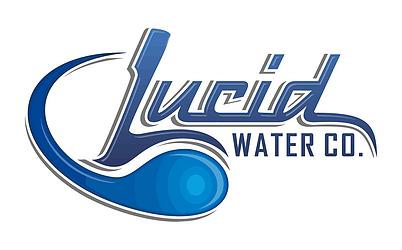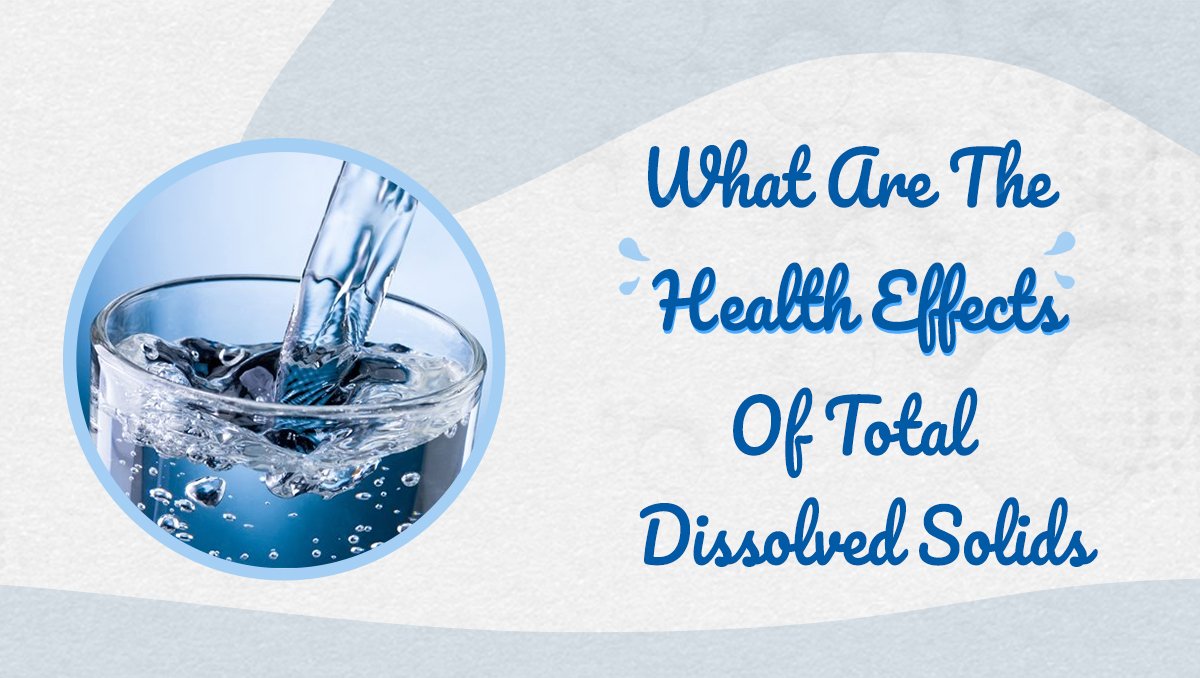Total Dissolved Solids In Water
Many households are not aware of Total Dissolved Solids (TDS) in their drinking water. Without knowing, the levels may be way above or below the suggested limits.
Clean drinking water is the most important resource for our health and well-being. However, despite knowing the importance of clean drinking water, some people are unaware of the Total Dissolved Solids in what seems to be clean water.
The quality of water is highly affected by these dissolved solids. The solids include minerals, salts, metals, organic, and other inorganic substances. Although most TDS present in water is naturally beneficial. However, too much salt or minerals can lead to health issues. A high amount of TDS in water can be detected by its odor, appearance, and taste. This article will discuss the types of TDS present in water and how much of these solids are acceptable to drink.
Total Dissolved Solids In Your Tap Water (What Are They?)
Total Dissolved Solids (TDS) measure the amount of inorganic and organic substances in water, including minerals, salts, metals, and other dissolved compounds. However, this amount depends on various factors, including your water supplier and geographical location. TDS is typically measured in parts per million (ppm) or milligrams per liter (mg/L).
In tap water, TDS levels can vary depending on the source of the water and the treatment processes used by the local water treatment facility. In general, tap water with TDS levels below 500 ppm is considered acceptable for drinking, although higher levels may be present in certain regions or during certain times of the year.
It's important to note that not all dissolved solids harm human health, and many minerals and salts are essential for maintaining good health. If the tap water supplied in your area has an acceptable amount of calcium or other salts, it will benefit your health; some of these solids also enhance the taste of water itself. However, if the amount exceeds the stated limits, the water will taste metallic and smell bad and damage your steel pipes and other kitchen utensils. In some cases, a high amount of TDS in tap water may indicate the presence of harmful contaminants, leading to rusting problems in households.
The amount of TDS in the tap water supplied to your area might change due to agricultural or industrial changes. If you're concerned about the TDS levels in your tap water, you can request a water quality report from your local water utility or have a company like Lucid Water come out to test the levels.
Call 604-510-0441 To Book A Free TDS Test For Your Home
Breaking Down TDS In Your Water
The Definition Of TDS
As discussed above, Total Dissolved Solids in water are organic and inorganic substances mixed in water. These substances are supposed to be in calculated amounts, as too much, or even too little, of these minerals can make the water unfit and dangerous to consume.
Dissolved Solids In Water
Here is a list of solids categorized as total dissolved solids in water:
● Magnesium.
● Calcium.
● Potassium.
● Chloride.
● Zinc.
● Aluminum.
● Copper.
● Lead.
● Arsenic.
● Iron.
● Chlorine.
● Sodium.
● Fluorine.
● Bicarbonates.
● Sulfates.
● Pesticides.
● Herbicides.
Where Do These Dissolved Solids Come From?
From the list mentioned above, dissolved solids come from various natural and man-made sources. As water makes its way down from between rocks and layers of sand, it mixes in these minerals on its way. Minerals like calcium, potassium, and salts like sodium chloride are in the sand. Hence, they get dissolved as water moves through them. Other solids, like lead, sulfates, pesticides, etc., are added due to man-made activities. Fertilizers added to the soil increase the amount of these solids in water and, in most cases, makes it harmful for humans to consume. Apart from these sources, sometimes water pipes also have zinc and arsenic rust over them, which gets mixed in the water as it passes through them.
What Is The Normal Range Of TDS For British Columbia?
The normal range of Total Dissolved Solids in water should be around 200-500 mg per liter. However, this amount may vary depending on the area and surrounding activities. Let's take a detailed look into the normal range of TDS for British Columbia.
Water Hardness Chart (Grains Per Gallon)
The image and chart represent the amount of TDS grains in every gallon of water, making the water impure and unfit for consumption.
What Should Be The TDS Of Drinking Water?
The TDS of drinking water can vary depending on various factors, such as the source of the water and the treatment process it undergoes. However, in general, the TDS of drinking water should be less than 500 ppm (parts per million), according to the World Health Organization (WHO).
Higher TDS levels can indicate the presence of minerals, salts, and other dissolved solids in the water, affecting its taste and quality. High TDS levels can make water less suitable for consumption, as it may contain harmful contaminants.
It is important to note that TDS alone is not a definitive indicator of water quality. Other factors such as pH, hardness, and the presence of specific contaminants should also be considered. It is recommended to have your drinking water tested regularly to ensure it meets the appropriate standards for safe consumption.
Total Dissolved Solids In Drinking Water
What Are The Health Effects Of Total Dissolved Solids
How much TDS in water is good for health? While some of these solids, like calcium, potassium, etc., are safe to consume, an excess or deprivation of any element can make the water unfit for consumption.
Health Effects Of Low TDS
Water with low TDS can usually be detected by its weird odor and unpleasant taste. Due to the lack of essential elements and salts in this water, consuming it for drinking is often avoided. Due to the low TDS content, prolonged water consumption might lead to various deficiencies like anemia or gut diseases. Although this water can be used for daily chores, it is unsuitable for drinking.
Health Effects Of High TDS
The effects of high TDS in water are more serious than low TDS. Due to a high amount of salt, minerals, and other impurities, the water tastes metallic and salty. Apart from the taste, this water can easily damage utensils and water pipes by causing them to rust faster. A high amount of sulfur or salts can cause human blood pressure issues, kidney stones, etc. Prolonged use of hard water can lead to serious health issues, including heart, depression, kidney stones, etc.
Hence, too much or too little TDS in water is potentially harmful to human health. To maintain a balance and ensure that the water supplied in your area is safe to consume and acceptable to drink, you can ask your local authorities to check the TDS levels regularly to ensure a healthy environment.
Solutions For Total Dissolved Solids In Your Water
The water supplied to our homes is usually filtered to remove the large insoluble particles. However, removing the excess dissolved solids from water is also crucial. Here are a few water filter options you can install at home to get perfect fresh water.
1. Reverse Osmosis
Osmosis removes tiny, dissolved solids by letting only water through the thin membrane. In reverse osmosis, molecules less than 0.0001 microns pass through the membrane. This helps remove salts, metals, and other solids: making the water pure and fit for drinking.
2. Distillation
Distillation involves boiling water and cooling the vapor until it condenses to clear water. With this procedure, only water vapors condense, leaving impurities behind for this method. You will need a professional setup.
3. Carbon Filters
The activated carbon absorbs impurities. Similarly, installing a carbon filter will remove impurities from your water, making it clean and acceptable to consume.
Summary
To sum it all up, TDS is an important factor that must be considered to ensure you drink clean water and avoid any health issues. A low content of TDS is not as harmful as an increased level of TDS. The ratio of these dissolved solids depends highly on where you live. However, the excess impurities can be removed from water using filters and chemical processes. Contact Jenny from Lucid Water To Get Your In-home TDS Reading Today.
Total Dissolved Solids In Your Drinking Water Frequently Asked Questions (FAQ)
Q: How Does A TDS Meter Work And What Is A TDS Meter Used For?
TDS is a device used to measure the concentration of impurities in water. In this method, the electric conductivity of the water is tested using two electrodes. Electricity is passed through the two electrodes to check the conductivity. This is a fast and easy method to check the water hardness level and check water quality.
Q: Total Dissolved Solids Vs. Hardness: What’s The Difference
Hardness and Total Dissolved Solids (TDS), two distinct water quality indicators, are frequently misunderstood. Although the mineral content of water is the subject of both measurements, they are not the same thing.
The total amount of minerals and other substances that are dissolved in water—both organic and inorganic substances—is referred to as TDS. The taste, appearance, and quality of water can be affected by high TDS levels.
On the other hand, hardness specifically refers to the amount of calcium and magnesium ions present in water. Hard water can lead to issues like scale buildup in appliances and pipes, less soap lather, and fixtures getting stained.
TDS and hardness indicate water's mineral content but are not directly related. It is possible to have water with a low hardness and a high TDS level or vice versa. Therefore, measuring TDS and hardness separately is essential to comprehend the water's overall quality.
Q: Does Boiling Water Reduce TDS?
The concentration of Total Dissolved Solids in water can be increased rather than decreased by boiling it. This is because boiling causes the water to evaporate, removing the dissolved solids and thus increasing their concentration in the water.
When water is heated to the boiling point, its dissolved solids remain behind as water evaporates, increasing their concentration. As a result, boiling water is not a good way to remove TDS from it. Conversely, distillation, reverse osmosis, and deionization are more efficient at removing dissolved solids from water. Instead of boiling the water and leaving the solids behind, these methods are made to remove the dissolved solids from it physically.








